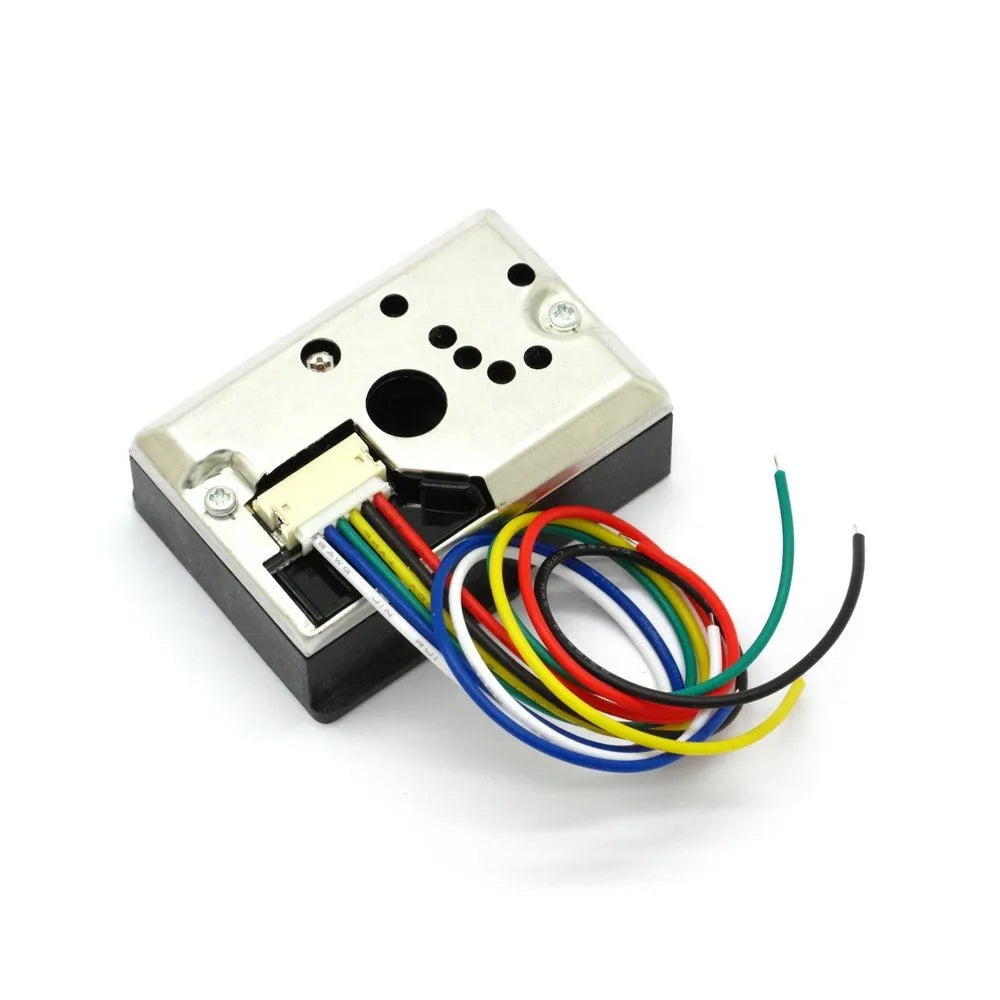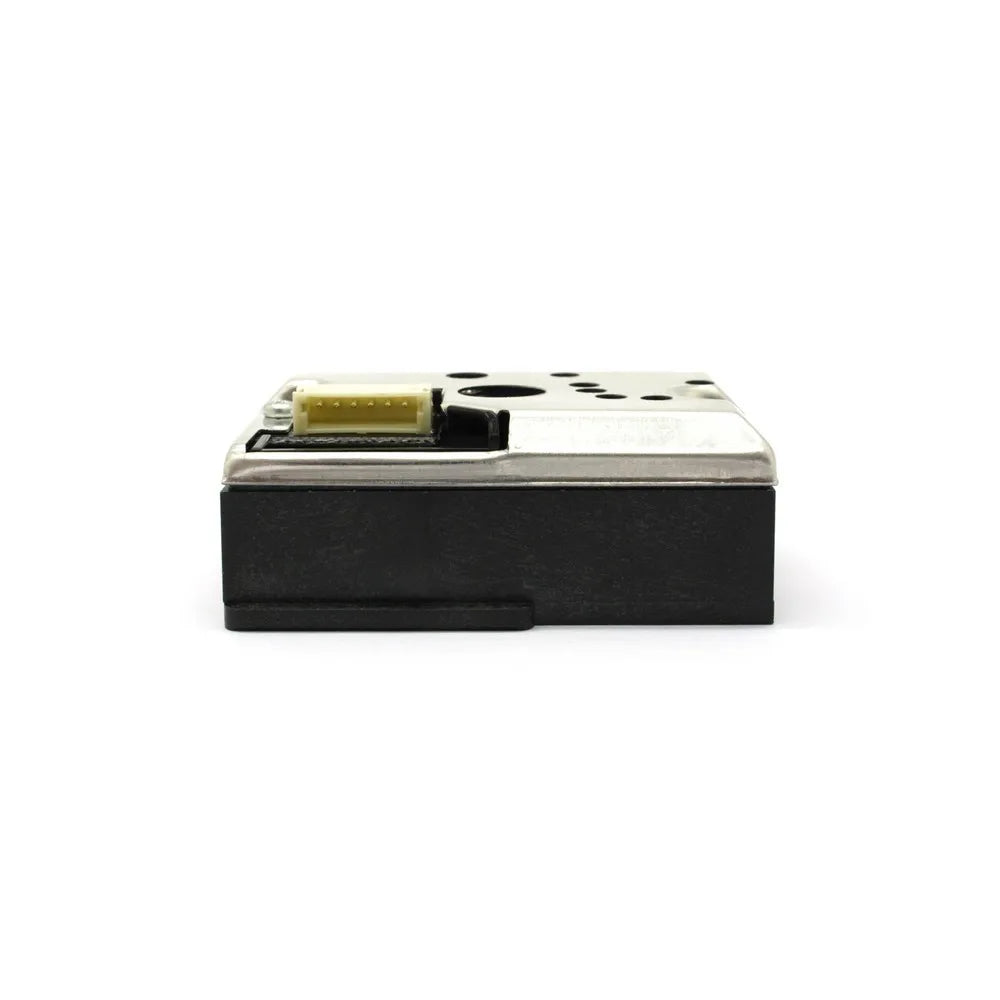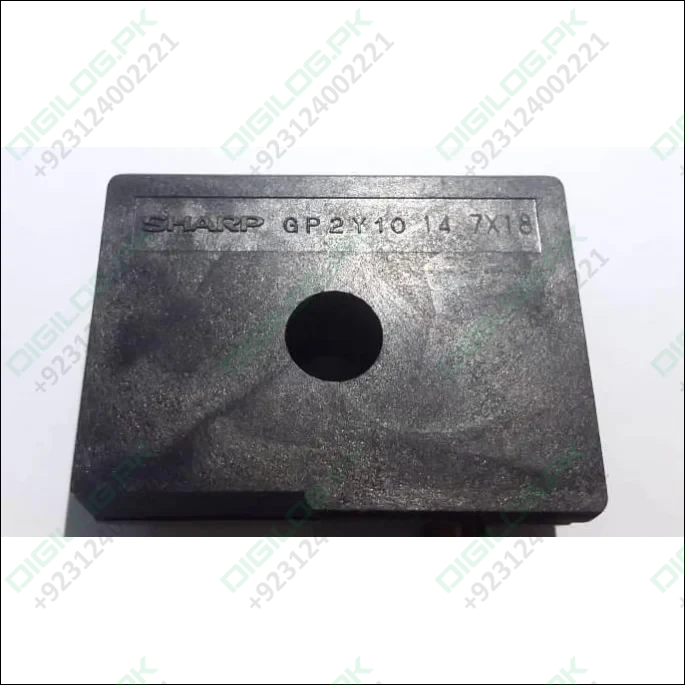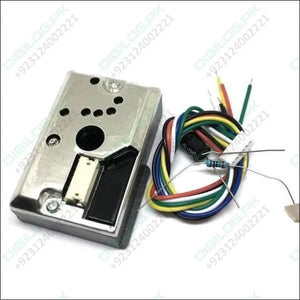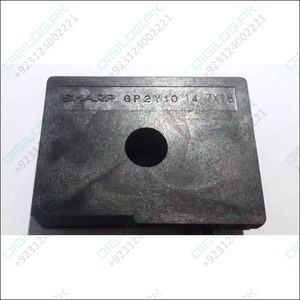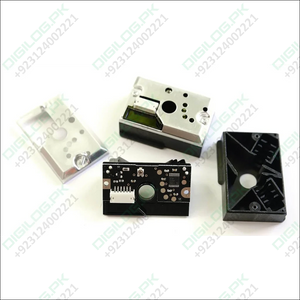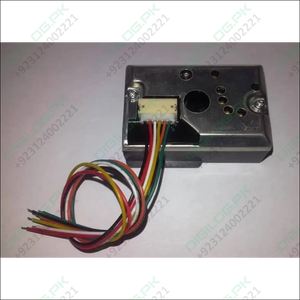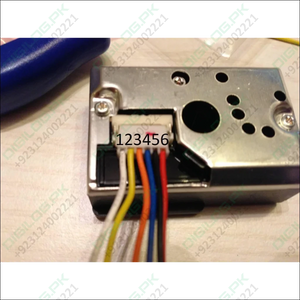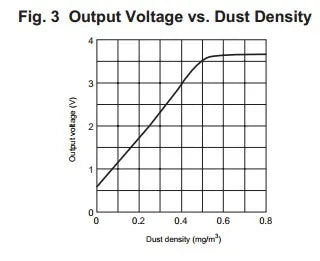Dust Sensor Module Gp2y1010au0f Compact Optical Dust Sensor
Guaranteed Safe Checkout

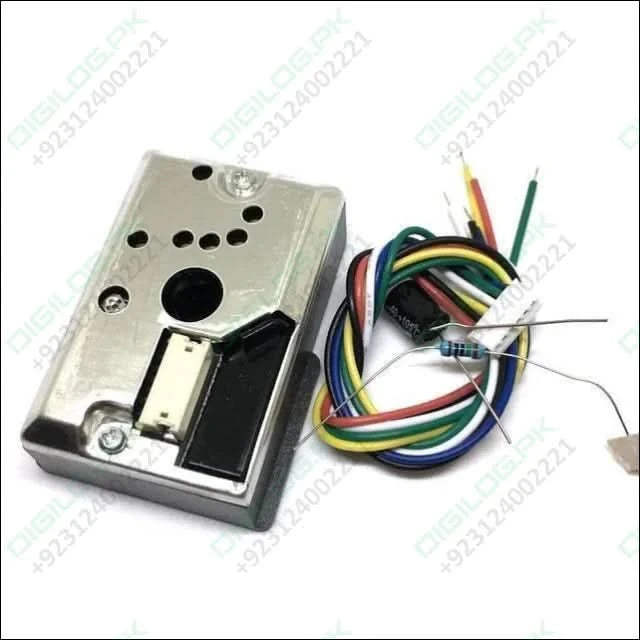
Dust Sensor Module Gp2y1010au0f Compact Optical Dust Sensor
Dust Smoke Particle Sensor An infrared emitting diode (IRED) and a phototransistor are diagonally arranged into this device. It detects the reflected light of dust in the air. Especially, it is effective to detect very fine particle like the cigarette smoke. In addition, it can distinguish smoke from house dust by the pulse pattern of the output voltage.
Main features:
- PWM output mode
- Compact, lightweight
- Easy to install
- A single power supply
- Low prices.
Main applications:
- Air purifiers and air cleaners
- Air-conditioning
- The air quality monitoring instrument
- Air conditioning and other related products
The main parameters:
- The optical principle, be able to detect more than 1-micron dust particles
- The two output modes, solve different sensitivity requirements
- High output signal Vout clean environment (4V)
- 5VDC power supply
- Detecting particles range : up to 8000pcs / 283ml (1um particles above )
The Sharp Optical Dust Sensor (GP2Y1010AU0F) is especially effective in detecting very fine particles like cigarette smoke, and is commonly used in air purifier systems.
An infrared emitting diode and a phototransistor are diagonally arranged into this device, to allow it to detect the reflected light of dust in air.
The sensor has a very low current consumption (20mA max, 11mA typical), and can be powered with up to 7VDC. The output of the sensor is an analog voltage proportional to the measured dust density, with a sensitivity of 0.5V/0.1mg/m3.
For your convenience, ITEAD ship this sensor with a 6-pin, 1.5mm pitch mating connector and cable.
Specification
- Supply voltage: 5-7V
- Operating temperature: -10-65 Celsius degree
- Consumption current:20mA max
Shipping List
- 1x Sharp GP2Y1010AU0F Dust Sensor
- 1x Cable
- 1x 150ohm resistor
- 1x 16v220uF capacitor
Routine 1, test code:
int dustPin=0;
float dustVal=0;
int ledPower=2;
int delayTime=280;
int delayTime2=40;
float offTime=9680;
void setup(){
Serial.begin(9600);
pinMode(ledPower,OUTPUT);
pinMode(dustPin, INPUT);
}
void loop(){
ledPower is any digital pin on the arduino connected to Pin 3 on the sensor
digitalWrite(ledPower,LOW);
delayMicroseconds(delayTime);
dustVal=analogRead(dustPin);
delayMicroseconds(delayTime2);
digitalWrite(ledPower,HIGH);
delayMicroseconds(offTime);
delay(1000);
if (dustVal>36.455)
Serial.println((float(dustVal/1024)-0.0356)*120000*0.035);
}
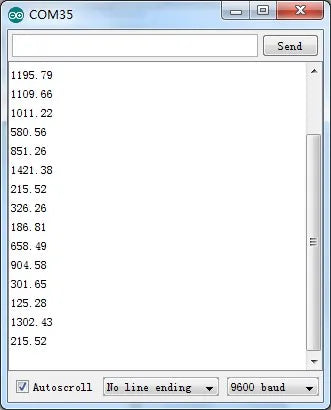
Test data and air quality control:
3000 + = very poor
1050-3000 = error
300-1050 = General
150-300 = good
75-150 = very good
0-75 = very good
Routine 2, test code: final concentration value.
int measurePin = 0; Connect an analog port 0, that is, routine 1 dustPin
int ledPower = 2; Connecting digital pins 2
Int samplingTime = 280;//LED turn on period of time was 280 μ s
Int deltaTime = 40;//the whole pulse duration of 320 μ s. Therefore, we needed to wait 40 μ s
int sleepTime = 9680;
float voMeasured = 0;
float calcVoltage = 0;
float dustDensity = 0;
void setup(){
Serial.begin(9600);
pinMode(ledPower,OUTPUT);
}
void loop(){
digitalWrite(ledPower,LOW); Open internal LED
delayMicroseconds(samplingTime); 280us waiting time after the opening LED
voMeasured = analogRead(measurePin); Read analog values
delayMicroseconds(deltaTime); 40us wait time
digitalWrite(ledPower,HIGH); Turn off LED
delayMicroseconds(sleepTime);
0 - 5V mapped to 0 - 1023 integer values
recover voltage
calcVoltage = voMeasured * (5.0 / 1024.0); Analog values into a voltage value
dustDensity = 0.17 * calcVoltage - 0.1; To output the voltage value to a dust density units
Serial.print("Raw Signal Value (0-1023): ");
Serial.print(voMeasured);
Serial.print(" - Voltage: ");
Serial.print(calcVoltage);
Serial.print(" - Dust Density: ");
Serial.println(dustDensity); Final concentration value, output units: mg/m³
delay(1000);
}
Note: the above two of the wiring is the same as the code under test, you don't have to change, and then you can just burn to write code to test.
PIN definition:
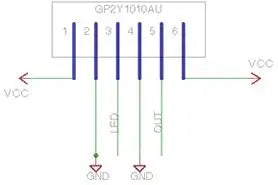

Not resistor capacitor wiring diagram
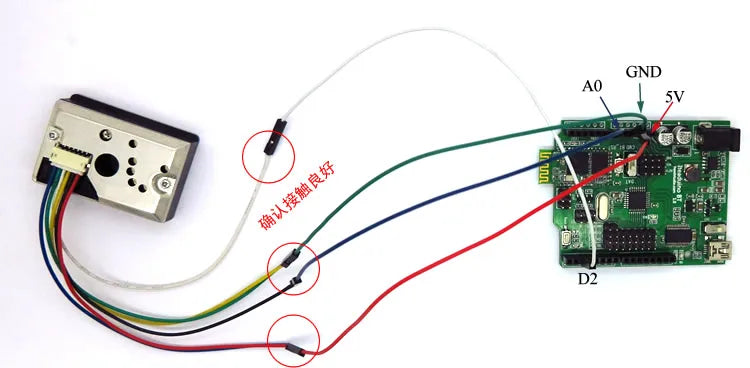
Note:Add aA 150ohm resistor and a 220uF capacitor, wiring the following figure!
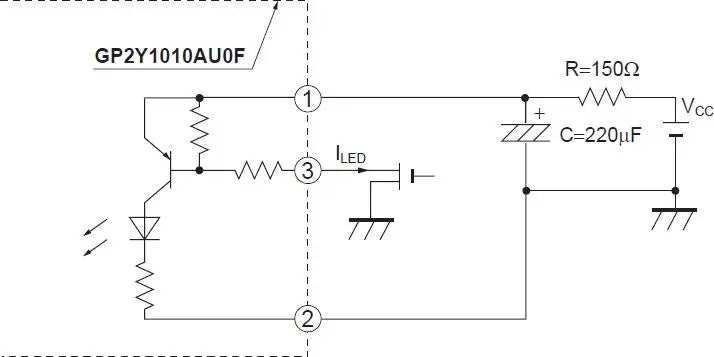
Sensor Pin Arduino Pin
1 Vled -> 5V (150ohm resistor)
2 LED-GND -> GND
3 LED -> Digital pin 2
4 S-GND -> GND
5 Vo -> Analog pin 0
6 Vcc -> 5V
LED pins must be adjusted to 1ms cycle, discussed in a data table.
LED appears to be PNP transistors to power on LED pins must accept a lower voltage.
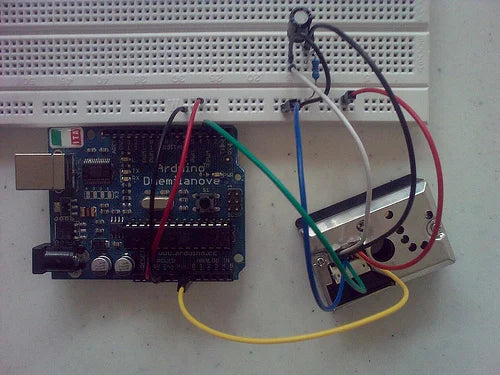
An overview of the sensor
Optical dust sensor (GP2Y1010AU0F) in the detection of very fine particles, such as cigarette smoke,Is particularly effective,
And is commonly used in air purification systems.
In the device,An infrared light emitting diode and a phototransistor, diagonally arranged to allow it to detectThe dust in the airThe reflected light.
The sensor has an extremely low current consumption (maximum 20mA,11 Ma typical), can carry up to 7VDCOf the sensor. Is an analog voltage output proportional to the measured concentration, sensitivity and 0.5V/0.1mg/m3.
Free 6pin DuPont line.
Specifications:
- Power supply voltage: 5-7V
- Operating temperature:-10-65 degrees Celsius
- Current consumption: 20mA maximum
- Smallest particles detected value: 0.8 micron
- Sensitivity: 0.5V/(0.1mg/m3)
- Clean-air voltage: 0.9V typical
- Operating temperature:-10~65°
- Storage temperature:-20~80°
- Service life: 5 years
- Size: 46mmx30mmx17.6mm
- Weight: 15G
